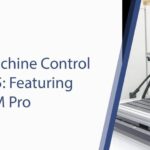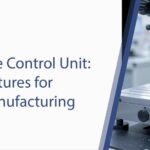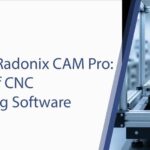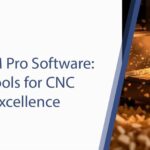The Power of Virtual Reality (VR) and Augmented Reality (AR) in CNC Machining
The world of CNC machining is undergoing a rapid transformation, and technologies like Virtual Reality (VR) and Augmented Reality (AR) are redefining how manufacturers design, program, and operate their machines.
These immersive tools go far beyond visualization—they enhance precision, improve safety, and empower operators with smarter, faster ways to interact with CNC systems.
By integrating VR and AR into CNC controller programming, manufacturers unlock new dimensions of efficiency, training effectiveness, and operational intelligence. Let’s explore how these innovations are shaping the future of machining.
Immersive Training and Simulation
VR and AR enable manufacturers to simulate real machining environments, allowing operators to train and practice in a risk-free, digital setting. These virtual simulations help new operators understand machine behavior and tool movements without needing to use physical equipment.
Key Benefits:
- Strengthens skill development through hands-on digital practice.
- Reduces human errors during live operations.
- Cuts training costs and machine downtime.
By providing realistic, interactive training, VR and AR shorten the learning curve and prepare operators for high-precision manufacturing tasks.
Interactive Programming Interfaces
AR-powered overlays allow operators to visualize CNC parameters, tool paths, and part geometries directly on the machine interface. This technology eliminates guesswork and streamlines machine setup.
Advantages:
- Simplifies G-code adjustments and toolpath edits in real time.
- Reduces setup errors and programming complexity.
- Enhances productivity with visual guidance and live feedback.
This interactive approach ensures operators can modify machining parameters instantly, improving both precision and response time during production.
3D Visualization of Tool Paths and Workpieces
Using VR and AR, engineers can view detailed 3D simulations of tool paths, workpieces, and fixtures before machining begins. This capability prevents potential collisions and ensures that designs are executed flawlessly.
Benefits:
- Detects potential tool collisions early.
- Enhances accuracy and operator confidence.
- Improves overall machining safety and consistency.
With virtual visualization, manufacturers can validate toolpaths before production—saving time, tools, and material waste.
Remote Collaboration and Expert Support
VR and AR platforms enable real-time collaboration between on-site operators and remote experts. This is particularly valuable in global manufacturing environments where technical support may not be physically available.
Applications:
- Live troubleshooting through AR glasses or tablets.
- Step-by-step visual guidance from remote engineers.
- Faster issue resolution and reduced downtime.
This remote support model empowers teams to maintain continuous operations, even across different time zones.
Error Detection and Verification
AR overlays allow operators to compare programmed tool paths against real-time machining processes. Any deviation between the programmed model and the actual part is instantly detected and highlighted.
Results:
- Early detection of dimensional inaccuracies.
- Prevention of costly rework and scrap.
- Assurance of consistent part quality and precision.
This immediate verification process ensures error-free manufacturing while maintaining optimal production speed.
Real-Time Machine Status Monitoring
Through AR dashboards and VR visualization, operators can monitor essential machine parameters such as spindle temperature, vibration, tool wear, and energy consumption—all in real time.
Advantages:
- Enables predictive maintenance and condition-based monitoring.
- Reduces unexpected downtime and machine failures.
- Improves production transparency and operator awareness.
These monitoring tools turn every CNC machine into a connected, intelligent asset within the factory ecosystem.
Accelerated Setup and Changeovers
AR-guided workflows display real-time visual instructions on tool alignment, fixture positioning, and workpiece placement. This intuitive guidance helps operators complete setups and changeovers faster.
Benefits:
- Reduces setup and calibration time.
- Eliminates manual errors during configuration.
- Improves consistency across multiple operators or shifts.
For high-mix, low-volume manufacturers, this efficiency translates directly into faster turnaround times and higher output.
Workflow and Production Optimization
Manufacturers can use VR-based digital twins to test and simulate different production scenarios before implementing them on the factory floor. These simulations help optimize resource use, scheduling, and cycle times.
Outcomes:
- Smarter production planning through data-driven decisions.
- Improved resource allocation and workload balancing.
- Continuous improvement across the entire production cycle.
With virtual simulations, companies can experiment and refine their production models—reducing waste, cost, and unproductive time.
Why VR and AR Matter in CNC Machining
The integration of VR and AR into CNC programming and operation delivers unmatched advantages for modern manufacturers:
- Immersive and safe operator training.
- Visualized, interactive machine programming.
- Real-time collaboration and remote diagnostics.
- Improved accuracy and reduced downtime.
- Smarter, data-driven workflow optimization.
In an era defined by digital transformation, VR and AR are not optional add-ons—they are strategic enablers that redefine how factories operate.
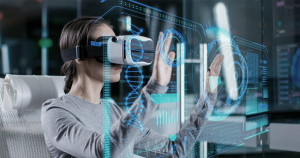
Radonix: Leading the Future of CNC Innovation
With over 16 years of experience in CNC controller design, Radonix stands at the forefront of industrial automation and digital transformation. Our advanced CNC solutions support VR, AR, and other Industry 4.0 technologies to empower manufacturers across industries—from stone and wood processing to metal and precision engineering.
Radonix continues to develop next-generation CNC systems designed for smarter, faster, and more connected manufacturing environments.
Contact Us:
- E-Mail: info@radonix.com
- Phone: +90 (553) 920 5500


